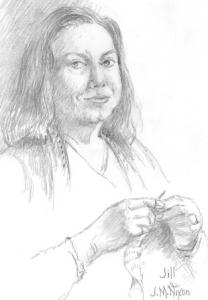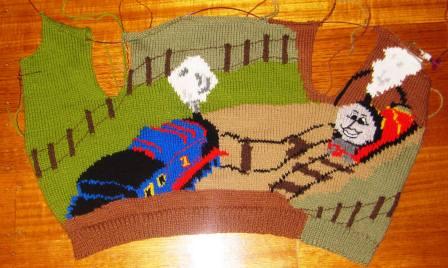Sadly violence and violence within relationships is sometimes celebrated ands even bizarely so as in Chris Brown’s neck tattoo. Domestic violence is always wrong.
Writer Kira Cochrane said if the tattoo was not meant to be Rihanna, then Brown should find a new tattoo artist.
“Because there’s no doubt the image calls to mind the biggest scandal of his career, looks absolutely like a pummeled woman, and is in those terms completely sickening,” Cochrane wrote.
“What’s also depressing is that if this is, in fact, the intention, it would actually mark a natural next step in Brown’s career path.
“While he might have been expected to be contrite in the wake of the 2009 attack, he has actually built a strong and burgeoning profile by embracing a bad boy image.”
In June 2009 Brown pleaded guilty to a felony and accepted a plea deal of probation, community service and domestic violence counselling.
Read more: http://www.theage.com.au/lifestyle/celebrity/looks-familiar-chris-browns-latest-tattoo-sickening-20120912-25r8v.html#ixzz26EloXG8D
Some years ago I spoke o this issue at a conference organised by Jireh House. It seems the issue is worth restating. Below are excerpts from the address given in Hobart, 29 April 2004 (To read the whole address of the diocesan website click here.)
I am more often in the media because of the issue of sexual abuse by clergy, than I am for domestic violence. There are, however, some parallels between the two issues. I believe we can learn from some of the mistakes the church worldwide has made in responding to these issues in the past. Mistakes that led to more children being sexually abused – or in the case of domestic violence, more women and children suffering deep and long lasting damage. (Domestic violence includes physical abuse, psychological and emotional abuse, sexual manipulation and abuse, isolation, economical deprivation and stalking.)
The first response of the church world wide to allegations of sexual abuse by clergy, was ‘not to hear’, because the belief was ‘that good Christian men, who we knew, could not behave like that.’ So the church’s first response was ‘not to hear’ and its consequence, ‘not to believe.’ We face the same tendency when told of domestic violence.
Once the church did finally believe that this bad behaviour had occurred, the second mistaken response was to treat the abuse as any other one-off moral failure. This underestimates the grip this behaviour has in people’s lives, and the layers and layers of self-deception and control involved. (Isn’t this another parallel to domestic violence?) Thus, in the early days, offenders of child sexual abuse were handled using time honoured Christian strategies for dealing with moral failure. They confessed to their superiors in tears, promised never to do it again, and were sent off on spiritual retreats, etc., had absolution pronounced over them – and leaders felt that the perpetrators had truly repented and reinstated them.
Unfortunately, they were reinstated to positions from which they could abuse others. A few may have stopped, but others re-offended, and more young lives were ruined. What occurred in Boston occurred in too many places. Can we learn from their mistakes? When we reinstate someone, we need to ask, ‘Who are we asking to carry the risk, and pay the price if this doesn’t work, if this goes wrong?’ It is one thing to risk ourselves, but should we ask children to carry that risk?
Can you see the parallels with domestic violence? Are we also in danger in the area of domestic violence of simplistically applying great Christian principles? Of applying them in a way that colludes with the perpetrator about some watered down version of reality? In ways that do not even begin to address the grip that this has in lives, nor challenge them to the hard work of change that must flow from true repentance. We help neither victims nor perpetrators if we do that. Some mistakes Christians have made
1.We have fooled ourselves that domestic violence does not happen in good Christian homes – thus we have failed to hear and failed to believe.
My own experience is that when told of abuse by a man I know, I am inclined to disbelief: how can this be true? He is a Christian; I know him and have even ministered and prayed with him. This discomfort inclines me/us not to hear or believe a victim…
2. We have clutched at simplistic tools.
The discomfort and inadequacy we pastors feel when faced with this issue – our own discomfort, often rushes us into suggesting simplistic solutions to both victims and perpetrators. We often clutch at simplistic answers, because of our own discomfort. We can suggest solutions like ‘forgiving others’ or ‘God can forgive you’ as a way of trying to bring people’s pain to an end: to jam the lid back on the box of suffering….
3.The tools we have given perpetrators have often been inadequate.
If we have challenged the perpetrator, the tools we have given him may well have been inadequate. In practice we have assisted him or her to evade reality or the need to do the deep work of change…
4.The tools we have given victims have also often been simplistic.
We know the power that forgiving another has, so we can advocate forgiveness prematurely as a solution to a victim’s problems….
Conclusion
Our first step is to acknowledge that it can be our own discomfort as pastors that can help us collude with perpetrators into slick solutions, and pronouncing a rapid absolution. We also acknowledge that we need to insist that other professionals be called in, so that like Zacchaeus, the perpetrator gives legs to his sorry, by addressing what will help bring about change.
I can tell you some of the dilemmas. I don’t pretend to know the answers. I am both grateful for the ministry of Jireh House and confident that through today’s Jireh House seminar pastors and church leaders can learn more about our Christian response to domestic violence.
It will help us build a healthy church and a healthy Tasmania.



 very often … .
very often … .

